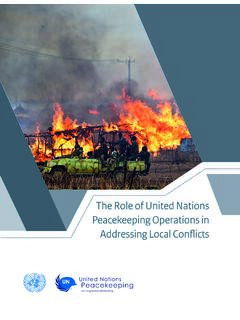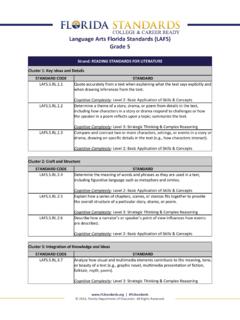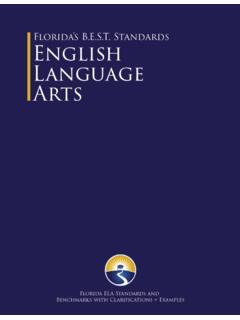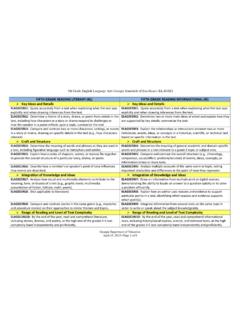Transcription of COMMUNITY OUTREACH & COVID-19 Communication and ...
1 1 COMMUNITY OUTREACH & COVID-19 Due to the COVID-19 pandemic, many COMMUNITY OUTREACH programmes conducted by our Missions have ceased or reduced, however missions have been using innovative ways to continue COMMUNITY OUTREACH whilst following COVID-19 prevention and protection measures and support the COVID-19 prevention efforts. This paper drafted by the Strategic Communication Section of the Department of Peace Operations aims to document best practices observed and reference existing available guidance, including from UN System and humanitarian partners. Communication and information tools Communications teams on the ground are using all available channels, in particular radio, WhatsApp groups and COMMUNITY leaders including women (local audiences) and social media (national and international audiences), including in local languages, to disseminate COVID-19 related information and to dispel rumours and counter misinformation.
2 Missions and humanitarian partners such as Translators without Borders use language mapping to more efficiently target and reach populations. Radio Radio is being used by missions to support host governments, the World Health Organization (WHO) and humanitarian partners efforts to raise awareness in communities on COVID-19 preparedness, prevention and response whilst also addressing other key issues, such as the rise of sexual and gender-based violence (SGBV), especially domestic violence, during quarantine and in environments marked by heightened stress and socio-economic challenges. Wider COMMUNITY OUTREACH can be effectively achieved especially in low-literacy and multilingual environments - through radio, including programming sharing COVID-19 information and stories from health experts, peacekeepers, COMMUNITY leaders and other members of the COMMUNITY , broadcasting public service announcements (PSAs), newsflashes, current affairs programmes, interviews, radio games, arts -based sensitization messages and radio theatre.
3 Use of local languages and programming targeting varied audience (women, children) increased reach and effectiveness of campaigns. Partnerships with UN and humanitarian organizations and COMMUNITY /local radio stations is an effective means to reach more localized audiences in relevant local languages. MINUSCA is dedicating 80% of its Radio Guira FM broadcast to productions and content on COVID-19 , including a live radio game, radio theatre and spots, interviews, programs, and a series of messages by women leaders. It partners with 15 COMMUNITY stations and distributes 50,000 wind-up radio sets to communities especially women in Bangui and in other localities. 2 MINUSMA s Mikado FM dedicates an interactive radio programme to myths-busting and provides 63 local radio stations with WHO-certified sensitization materials in local languages for dissemination among local communities who do not traditionally have access to such products.
4 MONUSCO, UNMISS and MINUSCA radio stations produce up to 14 hours each of weekly interactive home schooling programmes in partnership with the Ministry of Education, UNICEF and humanitarian partners. MONUSCO: Mitigation measures in the radio station include covering microphones with disposable material to avoid the spread of the virus among broadcasters. Social Media Missions continue to use social media to disseminate information on the prevention of COVID-19 and peacekeepers efforts to combat the pandemic, monitor disinformation which has been rife on social media and correct misinformation. MONUSCO: production of a weekly social media monitoring report in partnership with the Force and JMAC on covid including to track and respond to misinformation. UNMISS has a myths-busting platform operating with local journalists and civil society actors in partnership with Facebook to monitor and fight misinformation, provide validated and timely information, counter hate speech and remove incendiary posts as appropriate.
5 MINUSMA: Radio Mikado FM has launched a COVID-19 sensitization social media video campaign will well-known Malian artists. MINUSMA/UNFICYP/MONUSCO: Handwashing challenge videos by the Mission leadership calling on national counterparts to replicate. MINUSCA produces cartoon-based animations on COVID-19 to reach a wider audience . Posters, flashcards, billboard, leaflets, and other materials. Missions are producing materials to disseminate within local communities detailing clear and accessible messages in local languages and using easy-to-understand infographics and cartoons. The latter help reach a wider audience including children and audiences with low literacy rates. UNMISS is running a major education campaign across the country, distributing 62,000 informational flashcards and 20,000 posters to COMMUNITY members explaining the symptoms of COVID-19 and ways to prevent it.
6 Similarly, MINUSCA has developed billboards, posters and a wide of visual materials with WHO in support of the Ministry of Health. Messaging platforms and networks Alongside local radio, missions are reaching out directly to communities and organizations via WhatsApp groups, SMS, other messaging platforms and networks, and in some cases by using moto-taxis equipped with loudspeakers. These methods have been essential in communicating with communities and IDPs, where individuals, especially vulnerable groups of women or the elderly, lack access to information, and to reach locations where there is no radio coverage. Missions are also boosting their digital OUTREACH and supporting 3 communities, including women, access digital platforms where, in some instances, they have felt safer to express themselves than in in-person meetings and groups.
7 UNAMID and MONUSCO: relay PSAs/information to specific interest groups on WhatsApp. UNAMID and MINUSCA use moto-taxis to disseminate info on speakers and communities in IDP sites. UNMISS uses promo-trucks and speakers mounted on vehicles to disseminate messages in the regions and PoC sites, respectively. Humanitarian partners and local organizations and structures Missions continue COMMUNITY OUTREACH by strengthening partnership with humanitarian partners and local organizations, working together to combat COVID-19 . Religious, local and traditional structures and leaders (priests, pastors, Imams, healers, traditional leaders) are also critical and trusted local messengers to relay accurate information and dispel rumours. arts , sports, socio-economic / trade groups and associations ( transporters and moto-taxis, phone-charging booths, SIM/recharge card sellers, barbershops and salons), albeit affected, are still influencing and operating inside communities and can act as critical two-way messengers.
8 UNMISS works with humanitarian partners to sensitize thousands of displaced families on preventing and preparing for COVID-19 . UNFICYP partners with Cypriot women s organizations to support their information efforts for women experiencing domestic violence during the quarantine. MINUSCA supports and trains the National Youth Council, which includes youth with speaking and hearing impairment, for door-to-door awareness on COVID-19 . Workshops Where possible, missions have been carrying out workshops raising awareness on the prevention of and preparation for COVID-19 . In cases where workshops can be carried out, staff and participants apply the WHO and host government s COVID-19 protection and prevention guidelines by setting up a handwashing station, spreading participants apart and using masks, for instance.
9 MINUSCA supported COVID-19 awareness-raising sessions for media professionals organized by the Central African Health Ministry to strengthen knowledge and capacities of journalists on COVID-19 with a view to objective, professional and responsible reporting on the pandemic. As a result, over 50 journalists signed up to a Charter of Good Conduct in the Central African Republic. Tag-along / embedded sensitization Patrols and COMMUNITY policing activities are a good opportunity to reach audiences to raise awareness on covid . Personnel can model prevention measures such as wearing masks and applying social distancing while continuing core work. Awareness-raising efforts can and should be integrated as part of QIP/CVR projects that expand at risk populations economic options through income-generating activities such as mask-sewing and soap-making, and should target women.
10 4 MINUSCA DDR/CVR projects and QIPs are reoriented towards COVID-19 prevention and response efforts, including mask-sewing/soap-making benefitting women and vulnerable communities. In all missions, police and military patrols integrate COVID-19 awareness-raising messages, in coordination with national security forces. Virtual events and platforms Where technically viable, virtual platforms and events can be used to continue COMMUNITY OUTREACH and disseminate information. UNMIK hosts weekly virtual townhall debates through the Balkan Investigative Reporting Network (BIRN) on COMMUNITY and national issues to increase sensitization on COVID-19 , including by reaching non-majority communities. The Mission has also launched a digital trust-building platform, which focuses on multi-ethnic cooperation stories and champions.
















